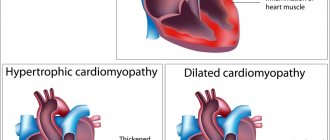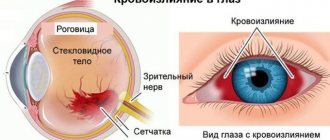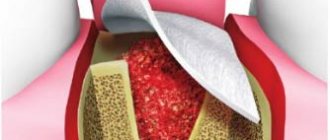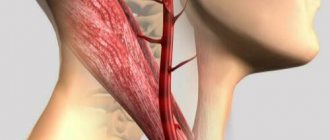Why do hot flashes occur, how to prevent and treat them?
Contents of the article
Hot flashes are sudden attacks of heat, most often associated with menopause or perimenopause. These two terms are basically the same in time and refer to the period during which ovarian function gradually declines.
Perimenopause begins 4-5 years before menopause, or around age 45. Menopause occurs around age 50 and marks the last menstruation of a woman's life. We can conclude that this is a complete cessation of the menstrual cycle if there has been no bleeding for a year.
Hot flashes affect not only women during menopause, but also men. Hot flashes or sudden heat waves are a very unpleasant phenomenon caused by an increase in body temperature and dilation of blood vessels in the skin, which becomes warmer and redder. The hot flash ends with severe sweating and a temporary drop in temperature. They can occur 20 to 30 times a day.
They last up to 10 minutes, during which the heart rate increases and shortness of breath occurs. After the hot flash passes, the woman's clothes become covered in sweat, which cools the body and interferes with normal daily life.
Heat in the feet
Complaints of heat in the feet are quite common. They say that “feet are on fire.” This may be a sign of a serious violation of microcirculation - blood supply in the small vessels of the legs, which is especially dangerous for people suffering from obesity or diabetes. In this case, you must definitely consult a doctor. An in-depth instrumental examination of the vessels of the legs may be required.
Another common cause of burning in the feet is a fungal infection of the skin. To exclude this option, it is necessary to be tested for fungal flora.
Menopausal waves
Hot flashes are most often associated with perimenopause or menopause, when there is a sudden drop in estradiol, one of the three estrogens synthesized in a woman's body.
Up to 45% of early postmenopausal women wake up every other night due to hot flashes and sweating. Two-thirds of them said they were chronically sleep-deprived as a result.
Associated with this are mental disorders that destroy quality of life through the so-called “domino effect.” Waves of nightly hot flashes and sweats lead to insomnia, which causes irritability, anxiety, depression, emotional lability, fear of aging and loss of attractiveness, and finally a drop in energy and libido.
An interesting study conducted in the US involving 60,000 women over 10 years found that women who experienced hot flashes during perimenopause and menopause were less susceptible to heart and cardiovascular disease.
Causes of hot flashes to the head
Physiological factors
A feeling of heat and a rush of blood to the head occurs during intense physical activity, especially in untrained people with excess body weight.
There is a feeling that your face is on fire. The skin becomes noticeably red and very warm to the touch. Hot flashes are accompanied by a feeling of fullness and heaviness in the head, and sometimes there is tinnitus. Unpleasant sensations disappear 10-20 minutes after rest. Hot flashes to the head are observed with psycho-emotional stress, severe anxiety, and shame. A person feels his face flush and his skin becomes hot. Sometimes an unpleasant pulsation in the head and discomfort in the stomach develop. This condition occurs periodically in any person, but frequent repetition of attacks, combined with the fear of blushing, may indicate erythrophobia.
Menopausal syndrome in women
Hormonal changes during menopause are the main etiological factor for hot flashes to the face and head in women. Attacks begin suddenly and are provoked by staying in a stuffy room, anxiety, or eating spicy or hot food. The woman feels an unpleasant heat and burning sensation in the head and neck. The skin very quickly turns pink or becomes covered with red spots. There is severe sweating of the face and neck, when sweat literally runs down the skin.
The feeling of heat is accompanied by headache, dizziness, a feeling of lack of air, and increased anxiety. After 5-15 minutes, the feeling that blood has rushed to the head disappears, but the redness may persist for a long time. Such paroxysms are observed from 5 to 20 or more times per day. The most intense and painful flushes of heat to the head occur at night, as a result of which patients suffer from insomnia.
Vegetative-vascular dystonia
Dysfunction of nervous regulation is characterized by a polymorphism of symptoms. VSD is often manifested by a rush of blood and heat to the head, and increased sweating in this area. In addition to these signs, patients experience dull pain in the temples and the back of the head, a feeling of a “pressing hoop” around the head, and dizziness. Hot flashes in the form of vegetative paroxysms occur with varying frequency, are provoked by emotional overstrain, but more often develop without visible factors.
Hot flashes to the head
Cardiovascular diseases
Sudden flashes of heat, accompanied by a severe headache and flashing spots before the eyes, are characteristic of a hypertensive crisis. Due to the expansion of superficial vessels, the skin of the face and upper half of the body turns red and becomes noticeably hot. Increased sweating is observed. Similar signs are typical for the neurovegetative form of hypertensive crisis.
Periodic redness, a feeling of vascular congestion and a rush to the head occur in hypertensive patients even with normal working pressure. Occasionally, attacks of facial redness with fever without fever occur with atherosclerosis. Such disorders are combined with headaches, dizziness, and tinnitus. Hot flashes are possible at any time of the day and are not associated with external provoking factors.
Complications of pharmacotherapy
Hot flashes in the head and neck are a side effect of taking nitrates to lower blood pressure. The symptom appears within a few minutes after rapid intravenous administration of drugs. The consequence of vasodilation is intense redness of the facial skin, patients feel fever and a throbbing headache. When trying to take a vertical position, dizziness and darkening of the eyes occur, caused by a sharp drop in blood pressure.
Rare causes
- Sleep pathologies
: sleep apnea syndrome, nightmares. - Withdrawal syndrome
: with alcoholic delirium, drug addiction. - Allergic reactions
: urticaria, Quincke's edema. - Damage to the central nervous system
: traumatic brain injury, neoplasms of the hypothalamic-pituitary system, post-concussion syndrome. - Endocrine disorders
: male menopause, diabetes mellitus, adrenal hyperfunction and pheochromocytoma.
Duration of tides
The duration of a fever attack is difficult to determine; it is individual for each woman. For some people, hot flashes may last a very short time and soon stop completely, while for others they may continue to occur for the rest of their lives. In any case, the longer they occur, the weaker they become.
The decrease in estradiol levels is recorded mainly one to two years before menopause (the last menstrual period in life, usually around age 50) and continues into early postmenopause. In postmenopause, the period after the last menstruation, they occur in 70-80% of women of this age, and in more than half they last for more than 2-3 years.
Numerous habits or substances can contribute to hot flashes, so it is recommended:
- limit hot drinks, spicy foods, alcohol and caffeine;
- do not wear tight or synthetic clothing;
- no smoking;
- avoid stressful situations;
- Do not stay in excessively warm rooms.
What to take for hot flashes during menopause?
Most often, doctors prescribe menopausal hormone therapy (MHT) to patients. Normalizing hormonal levels by taking such drugs not only reduces sweating, but also improves psycho-emotional state, helps cope with mood swings, increases performance and optimizes concentration.
However, it must be taken into account that drugs that compensate for the lack of estrogen can activate the launch of developing oncological diseases - in particular, breast, endometrial or ovarian cancer and aggravate chronic diseases and the risk of thrombosis. Therefore, treatment with hormonal drugs should occur exclusively according to the regimen drawn up by the doctor.
In recent years, it has become possible to replace the use of traditional tablet medications with the use of hormonal patches, gel forms, and intrauterine complexes.
They are considered less dangerous in terms of the possibility of venous thrombosis.
Hot flashes outside menopause
In addition to women during menopause or perimenopause, men and women of any age can experience hot flashes. Hot flashes are not considered too negative and in most cases go away soon after we discover and prevent the cause of their formation.
Also, if you're not sure what's causing a hot flash, it's a good idea to keep notes in your cell phone or notebook/diary handy. Write down when the hot flash occurred, how long it lasted, and what you did before it hit.
Hot flashes in people without menopause can be caused by:
- medications such as antidepressants, opioid analgesics, osteoporosis medications, etc.;
- excess weight, as it disrupts metabolism;
- food allergies (write down what foods you ate before the hot flashes, if some foods are repeated, try to exclude them from your diet);
- stress and anxiety (for many people, exposure to stressful situations causes sweating, rapid heart rate and fever);
- problems with the thyroid gland and other glands that produce hormones;
- Being in a very warm room (an overheated bedroom can cause night sweats).
How to ease the course of menopause
It is necessary to make some changes in diet and lifestyle. Eat more dietary fiber and eliminate animal fat. Add a small amount of vegetable fats. Include calcium-rich foods in your diet; the recommended daily calcium intake for women over 50 is 1200 mg. per day, and for better absorption, do not forget about vitamin D.
Alcohol, smoking, caffeine, excessive consumption of salt and protein foods lead to the excretion of calcium in the urine. To reduce temperature changes, avoid spicy and strong drinks and try to lose excess weight. Eat foods containing phytoestrogens - plant compounds similar in structure to estrogen. If you suffer from migraines, limit your intake of tyramine and MSG.
Physical activity speeds up metabolism, improves heart and lung function, slows down the process of bone density decline, normalizes blood pressure, reduces the frequency of temperature changes, and improves mood through the production of endorphins in the brain.
Treatment of hot flashes and their prevention
The ovary is the shortest-lived endocrine gland, and when it stops producing hormones, a replacement must be found.
Typically a combination of natural estrogens (most often estradiol) and progestogens is used.
Depending on the age, diseases and desires of the woman, treatment is agreed upon, which can be:
- cyclically combined (simulates the menstrual cycle);
- continuously combined (no cycle).
Usually it lasts up to 5 years, and if necessary, longer. Hormonal treatment has many benefits: it reduces symptoms such as hot flashes and night sweats, insomnia, headaches, mood swings, helps with dry and thin skin, and hair loss. It also has a protective effect on the nervous system, heart, blood vessels, atrophic changes in the female reproductive system, suppresses atherosclerosis, osteoporosis and reduces the risk of developing senile dementia.
Contraindications:
- estrogen-dependent breast cancer or a high risk of its occurrence;
- active thromboembolism;
- liver disease;
- cardiac ischemia;
- pregnancy;
- undiagnosed uterine bleeding;
- uterine fibroids and endometriosis.
Diagnostics
Depending on the symptoms that accompany hot flashes to the head, the patient is prescribed a consultation with an endocrinologist, neurologist, or cardiologist. During the initial examination, the doctor asks how long the attacks have been bothering you, how often they appear and what is triggered. The specialist conducts a physical examination, measures blood pressure and heart rate, and listens to heart sounds. The plan of laboratory and instrumental diagnostic studies includes:
- Neurological examination
. The specialist checks the basic deep and superficial reflexes and their symmetry. Using special tests and questionnaires, it establishes the correct functioning of the autonomic nervous system. If an organic lesion of the central nervous system is suspected, an EEG, CT or MRI of the brain is performed. - ECG.
A quick and non-invasive method is used to detect heart pathology. Based on the results of the cardiogram, the doctor diagnoses myocardial hypertrophy, arrhythmia, conduction disorders - the causes that cause hot flashes. To clarify the diagnosis, echocardiography is recommended; in rare cases, invasive coronary angiography is indicated. - Blood tests
. The level of cortisol, adrenaline, thyroxine and other hormones that contribute to a rush of blood and heat to the head are assessed. Women undergo an extended hormonal profile with the determination of estrogens, progesterone, FSH and LH. In men, the amount of testosterone is measured. Be sure to analyze the results of the lipid profile.
In case of possible endocrine disorders, the results of ultrasound of the adrenal glands and thyroid gland are taken into account. To assess the emotional state and exclude various phobias and neuroses that cause hot flashes, a consultation with a psychiatrist is required. Women of reproductive age who regularly experience paroxysms should visit a gynecologist - sometimes hot flashes develop due to dysfunction of the reproductive organs.
Dosed physical activity improves autonomic regulation
Accompanying manifestations
In some representatives of the fair half of humanity, especially after 60 years, the symptom is accompanied by a feeling of causeless fear or anxiety.
A woman during a hot flash experiences the following symptoms:
- your head suddenly starts to hurt;
- lack of fresh air;
- pulse quickens;
- dizziness appears;
- profuse sweating;
- hand trembling;
- nausea.
Some female representatives may be bothered by only one of the listed manifestations, while others may have several or even all of them. The intensity of manifestation is always purely individual. Some ladies have mild symptoms, while others are very worried. At its most severe, a woman can briefly lose consciousness.
When do tides occur? This symptom appears randomly. He is able to disturb a lady throughout the day or at night. Several times in a row or an isolated incident. Many women complain that hot flashes bother them at night. If night attacks of hot flashes occur regularly, then the woman may experience insomnia.
Can you have menopause at 40?
Many women experience menopause at age 40 , but this is associated with symptoms of various reproductive diseases. True, at this age only a small proportion of women experience the first symptoms of menopause, but this phenomenon does occur and is associated with ovarian dysfunction.
Of course, early menopause before the age of 40 is not a pleasant event, but it should not be considered a serious illness, since it is a natural process that occurs a little earlier in some women than in others. Such a phenomenon cannot be postponed, since it can be the result of both acquired and congenital factors. In particular, the reasons for menopause at the age of 40 may be the following:
- a congenital defect of the X chromosome, which causes premature aging of the ovaries;
- Turner syndrome;
- other hereditary disorders that affect the condition of the female reproductive system;
- diabetes mellitus and other thyroid diseases;
- various gynecological disorders, including sexually transmitted infections;
- obesity and anorexia;
- long-term use of medications;
- chemotherapy and radiation therapy;
- using hormonal contraception without a doctor's prescription.
Of course, women who, as a result of various factors, may be predisposed to early menopause need to pay special attention to their health and closely monitor symptoms that may indicate its onset.
Symptoms of menopause at the age of 45
At this age, a woman may experience the onset of hormonal changes, which make itself felt with specific signals:
- hot flashes, that is, profuse sweating, are one of the first symptoms of menopause before the age of 45;
- deterioration of vaginal hydration due to a decrease in the amount of estrogen;
- reduction in menstrual cycles, while they are heavy and sometimes irregular;
- depression, panic disorders, anxiety;
- headache, dizziness;
- blood pressure problems;
- insomnia;
- fast fatiguability;
- cardiopalmus;
- weight gain;
- difficulty concentrating.
Each of these conditions can be an early symptom of menopause , which can be noticed at 45 years of age. Of course, each of these symptoms can be attributed to a number of other diseases, but an experienced doctor is able to determine the true cause of the ailment.
It should be borne in mind that laboratory blood tests, which can help determine hormonal disorders, can determine the onset of menopause before the age of 45 years. After all, age-related changes directly depend on the state of a woman’s endocrine system.
Treatment of menopause in men
Andropause in men is not a disease, but is used to describe the age-related symptoms listed above. It is often the case that symptoms are caused by physical, life or psychological problems.
- Stressful situations at work, financial problems - all this reduces libido and causes problems with sleep;
- Excessive drinking and lack of exercise can make you feel lethargic and reduce muscle mass;
- Lack of understanding and quarrels in the family provoke depression.
What methods of treating menopause in men do doctors use?
If you are experiencing several of the symptoms described above, make an appointment with your doctor so that he can find out what may be causing the problem.
Discuss the symptoms with your doctor, tell us when possible signs of menopause began, and in addition, the doctor will prescribe an examination in the form of hormone tests and a general blood test. Based on their findings, your doctor will be able to recommend a number of different treatments. Some treatment options include making lifestyle changes such as eating better, exercising, giving up alcohol and smoking, or prescribing cognitive behavioral therapy or taking medications.
Treatment will depend on what symptoms you have and what is causing them. In any case, treatment should be preceded by a thorough diagnosis, taking into account the results of appropriate blood tests, symptoms, medical history, lifestyle and physical examination, as well as screening for prostate cancer.
Ask a Question. Make an appointment by phone
8 (843) 207-18-00










